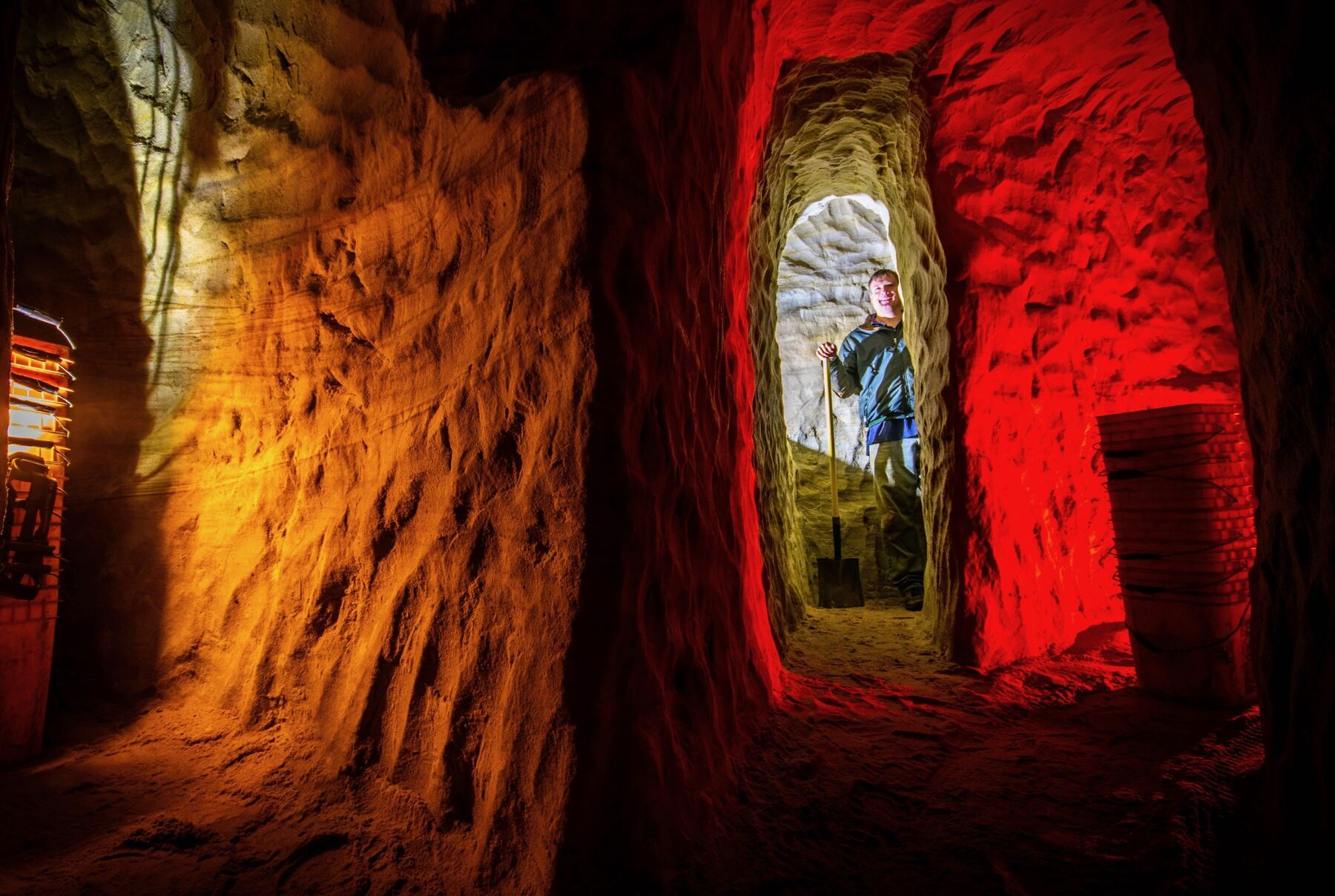Meet the DIY Diggers Who Can’t Stop Making ‘Hobby Tunnels’
Two years ago, Bryan Ritchie was shoveling dirt to put a walking path around his house in Huiroa, New Zealand, when he just felt the “urge to keep going.”
An environmental restoration specialist during the week, Ritchie, 58, now spends his Sundays with his well-worn shovel, indulging in his favorite hobby: tunneling. His hole now descends 16 feet underground and runs for 82 feet, stretching from behind his shed to the far end of his garden. “If I could, I would do it every day,” he said.
Ritchie isn’t digging with any destination in mind; he digs for the pure joy and meditation that comes with it.
“I just feel like a kid again,” Ritchie said. “It really puts me in the moment and relieves stress.”
Hobby tunneler Eric Sutterlin shows off part of his homemade underground labyrinth in Wisconsin. Photographer: Micah McMullin, courtesy of Eric Sutterlin
The roots of hobby tunneling go far deeper than the age of social media. In the 1880s, the 5th Duke of Portland employed 1,500 men to excavate several miles of tunnels, plus a subterranean ballroom, under his estate near Sheffield in the UK. A century later, Irish civil engineer William Lyttle — known as “The Mole Man” — spent 40 years creating a network of tunnels beneath his home in East London’s Hackney neighborhood. In 2006, Lyttle was evicted from his house after neighbors complained about sinkholes in the pavement. When pressed about the source of his fascination, Lyttle responded, “People ask what the big secret is. And you know what? There isn’t one.”
https://www.bloomberg.com/news/feat...will-the-underground-world-of-hobby-tunneling
maximus otter


